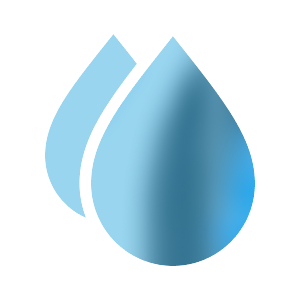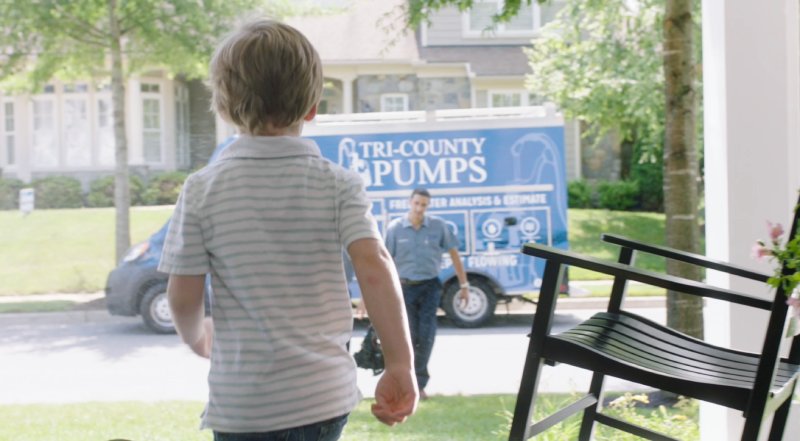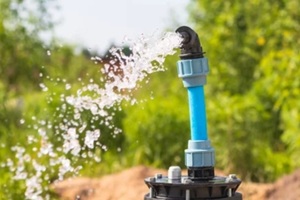
If your home runs on a well system, water pressure can make or break many aspects of your daily routine. Showers that feel weak, dishwashers that take forever to fill, or garden hoses that barely spray are often signs that something is off with your system’s pressure settings. Getting the right pressure helps your well pump run better, use less energy, and last longer.
This article details various ways that you can increase the water pressure of your well pump system.
What Normal Well Pump Pressure Looks Like
Most residential well systems are set to operate within a pressure range of 30 to 50 PSI or 40 to 60 PSI.
The numbers you see correspond to the cut-in and cut-out pressure levels controlled by the pressure switch. The cut-in is the point when the pump turns on, while the cut-out is when it shuts off after reaching the desired pressure.
A well-performing system typically maintains a 20 PSI differential between the two. For homeowners looking for stronger flow at fixtures, adjusting the range to something like 50 to 70 PSI can provide a noticeable improvement.
Importantly, pressure above 80 PSI is considered out of bounds according to both the International Residential Code (IRC) and Uniform Plumbing Code (UPC). Pushing beyond that limit requires a pressure-reducing valve and can stress plumbing components not rated for higher loads.
Start with Static and Flowing Pressure Measurements
Before making changes, be sure to gather real data from your system. Performing a static pressure test provides a baseline measurement of the system’s pressure when all fixtures are off. Attach a 0 to 100 PSI gauge to the tank tee, then record the cut-in and cut-out values.
Next, run a high-demand fixture like a bathtub or outside spigot to observe flowing pressure. If the well pressure drops below 40 PSI while water is running, showers and faucets will feel sluggish.
Also, time how long the pump runs from cut-in to cut-out. Anything under 30 seconds could signal short-cycling, which wastes energy and wears out your equipment.
Fix Pressure Loss from Filters or Softeners
Water treatment equipment is a common source of hidden pressure loss. Your system’s sediment filters, softeners, and iron filters can all become clogged or undersized over time.
Try temporarily bypassing the sediment filter; if pressure jumps by 5 to 15 PSI, the cartridge needs replacing or upgrading. The same goes for softeners or iron filters; bypass them and see if pressure improves by 8 to 15 PSI.
You should also check for simple fixes like half-open valves or clogged faucet aerators. While easy to overlook, these problems usually don’t require extensive labor or costly parts to correct.
If none of these steps brings pressure into the 40s or higher while running water, further system adjustments may be needed.
Raise Pressure Through Switch and Tank Adjustments
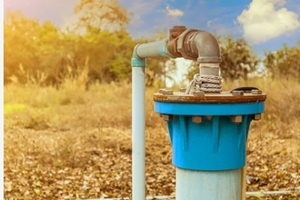
Most well systems use a dual-spring pressure switch. The larger nut raises both cut-in and cut-out settings, where each full clockwise turn adds about 3 PSI. Meanwhile, the smaller nut adjusts the differential, and turning it clockwise raises only the cut-out pressure. Always maintain a 20 PSI gap between the two to avoid short-cycling.
For safety, disconnect the power supply of the pump and then take off the switch cover before changing the settings. Never set the cut-out above the pump’s capability; the system won’t reach it, and performance will suffer.
Next, match the pressure tank’s air pre-charge. Fully drain the pressure tank, and then measure the internal air pressure using a standard tire gauge at the Schrader valve. Set it to 2 PSI below your chosen cut-in (for example, 48 PSI for a 50/70 setup), as this keeps the tank operating efficiently and prevents waterlogging.
Smoother Pressure with a Cycle-Stop Valve or Larger Tank
If your system still delivers choppy or uneven pressure, you might benefit from a Cycle-Stop Valve (CSV) or a larger pressure tank.
A CSV maintains a consistent output pressure once water use hits 1 gallon per minute. It throttles flow from the pump to match demand, reducing short-cycling and keeping pressure steady within 1 to 2 PSI.
A larger pressure tank can also help by increasing the volume of water available before the pump needs to turn back on. Doing so softens pressure swings and cuts down on pump starts.
Constant Pressure with Variable Speed Systems
Variable frequency drives (VFDs) are an advanced solution for homes wanting steady pressure across multiple fixtures. These systems use sensors and controls to adjust pump speed in real time, maintaining a user-set pressure, such as 60 or 70 PSI, regardless of demand.
Many brands offer VFD kits that improve comfort while reducing electrical and mechanical stress on the system. Benefits include stable water flow, quieter operation, and longer pump lifespan.
Booster Pumps for Pressure Drops at the Far End
Sometimes the well pump itself is fine, but pressure diminishes across long pipe runs or after water treatment equipment. In these cases, an inline booster pump is a viable option.
Modern units can add 20 to 40 PSI and include their own tank and pressure sensor. Pressure can be increased or decreased in 7 PSI steps, giving you flexibility in how the pump and tank perform together.
These boosters are especially useful in situations where the main pump can’t be adjusted, such as when treatment systems steal too much pressure.
Strong, Steady Pressure Starts with the Right Setup
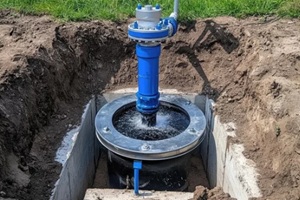
Getting the most out of your well system starts with understanding how pressure works, where it’s being lost, and what upgrades make the most sense for your home. Improving your well system through tank adjustments or full constant-pressure solutions can lead to big improvements in daily water use.
The team at Tri-County Pump Service has been helping families and businesses in Maryland, Virginia, and West Virginia enjoy reliable water systems since 1991. We treat your home’s water system like it’s our own, with the same attention to quality, safety, and performance we’d expect for ourselves.
If you’re ready for better water pressure and lasting solutions, give us a call at 1-(301)-882-2776, reach out through our online contact form, or schedule a visit directly on our website.

